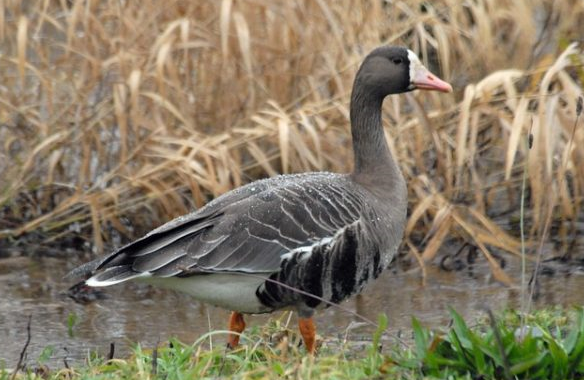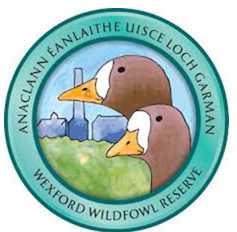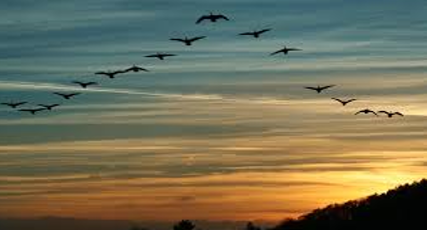
October is the month when we welcome back to Ireland about half the world population of the rare migratory Greenland White-Fronted Geese. Two-thirds of this number over-winter on the grasslands of the reclaimed wetlands, known as the Wexford Wildfowl Reserve, between Wexford Town and Curracloe.
What attracts Greenland White-Fronted Geese here?
Speaking to Mr Dominic Berridge, the Conservation Ranger at the National Parks and Wildlife Service, who is based at the Wexford Wildfowl Reserve on the North Slob, he talks about how the geese are managing overall:

‘The preferred grazing for these geese is regular rye grass, and local farmers are paid towards maintaining these grazing conditions, and for leaving it to the geese over the winter months. The grazing area covers about 2000 acres, a quarter of which is owned by Birdwatch Ireland and a quarter by the National Parks and Wildlife Service.’
‘The management of a wildfowl reserve also benefits many other species, mainly migratory waders, swans, ducks and geese. Dunlins, Knots and Redshanks, for example, all come to the ‘sunny south-east’, from their northern nest sites, where it is too cold to find food in the winter. Likewise, the Golden Plover comes to us from Iceland. Curlews from northern Europe over-winter in Ireland, and supplement the resident and sadly fast declining native Curlew population.’
‘Unfortunately, the Greenland White-Fronted Geese, are also suffering a decline in numbers. Climate change has made them vulnerable in recent decades. Research at Wexford and in Scotland has shown that they have not had a really good breeding season since 1995. It seems that the birds have been reaching their nesting grounds earlier, only to find that there is still snow lying and they lose condition while waiting for it to melt so they can start feeding. Less successful breeding is the result.’

Why do many migratory birds fly in a V-formation?
You may notice this month the characteristic V-formations in which many migratory birds fly. There are good reasons for this phenomenon.
First, it conserves energy. Each bird flies slightly above the bird in front of them, resulting in a reduction of wind resistance. The birds take turns being in the front, falling back when they get tired. In this way, the geese can fly for a long time before they must stop for rest. The authors of a 2001 Nature article found that birds which fly alone beat their wings more frequently and have higher heart rates than those that fly in formation. It follows that birds that fly in formation glide more often and reduce energy expenditure (Weimerskirch, 2001).
The second benefit to the V formation is that it is easy to keep track of every bird in the group. Flying in formation may assist with communication and coordination.

A Reflection on the Return of the Geese to Wexford
There are some people who associate the returning geese with the dates of the Wexford Opera Festival. To me, however, they are also a metaphor for our returning to church after the ‘lockdown’. During the nesting season, these birds have been separated from their wider community of geese, confined to their nests, while looking forward to getting back together where they can gather once again and catch up. Flying in formation, they have re-discovered the pleasure and benefits of working together again to make a journey, or to follow ‘the Way’, as Christians might say! For as the prophet Jeremiah tells us, the Lord has plans to give us hope and a future.

Did you know?
| The Greenland White Fronted Goose is known as ‘an Gé Bhánéadanach’ in Irish, or Anser Albifrons Flavirostris by its Latin scientific name. However, in the Inuit language of Greenland, this bird is known as ‘Nerdleq’, which is sound the bird makes, if you listen out for its call, when it is in flight, or grazing on the North Slobs, the next time you are visiting the Wexford Wildfowl Reserve. |
